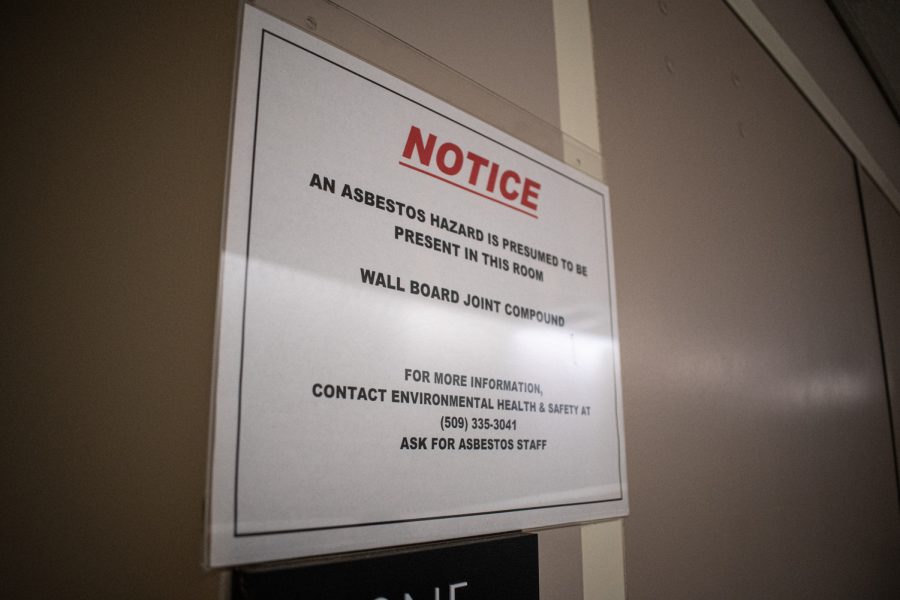Asbestos on campus: Present but not immediate danger
Inhaling asbestos over long period of time can cause diseases; proper maintenance keeps mineral in good condition
Maintenance rooms containing a risk of asbestos exposure are marked with proper signage.
November 17, 2021
Most buildings on campus built between World War II and the 1970s contain asbestos, a harmful mineral.
Floor tile and pipe insulation are the most common places asbestos is located, said Matthew McKibbin, industrial hygienist for Environmental Health and Safety.
Asbestos use increased heavily after World War II because it was a cheap and easy mineral to mine from the ground. It works well as a thermal insulator and does not conduct electricity, he said.
The harmful effects of the mineral were discovered in the 1970s. High asbestos use in the military and construction trades began making personnel sick.
When the mineral fibers are inhaled into the lungs over a long period of time, it can cause diseases like mesothelioma and asbestosis, he said. Mesothelioma is an aggressive form of cancer and asbestosis is lung tissue scarring.
It is much too expensive and time-consuming to remove all asbestos from campus, McKibbin said. Environmental Health and Safety has procedures for reporting, containing and removing the harmful mineral. However, students do not need to be concerned about the hazard.
“Our focus is keeping the asbestos products in good condition because they’re not hazardous if they’re in good condition, only when they’re breaking apart or getting dusty,” he said.
Lynn Hopkins, custodian for Goertzen, Jackson and Murrow halls said she is not overly concerned with asbestos on campus. She has very limited experience around it and has only reported one issue with a hole in a wall. It was concluded the issue was inconsequential.
Maintenance rooms containing a risk of asbestos exposure are marked with proper signage. Hopkins said she does not have to work in these rooms.
Her biggest concern is asbestos in the vinyl floor tile. Keeping the floor waxed and in good condition is the best way to prevent any damage. It is also very important to lift furniture when moving it so the tile does not get scratched, Hopkins said.
All facilities services staff go through annual training for recognizing and reporting hazards. The Washington State Department of Labor and Industries certifies 25 employees to safely remove asbestos, McKibbin said.
There are steps for mitigating asbestos risks. For every maintenance construction project, there is a process of identifying where asbestos is located within the site and how much there is. Those working on the project are then informed, he said.
Washington has specific rules for asbestos removal. When removing asbestos, it is sprayed down with water to limit how much asbestos fiber becomes airborne. The material is taken to a special section of a landfill for safe disposal. Proper signage, sealing off construction areas with plastic, wearing respiratory protection and protective suits are all key steps in reducing risk of exposure, McKibbin said.
Asbestos is not completely outlawed for use in the U.S. However, the material has been regulated by the Environmental Protection Agency since 1973, according to the EPA website. As of 2019, no new asbestos products can be introduced to the market without scrutiny from the EPA to determine if the product needs to be restricted or banned.










